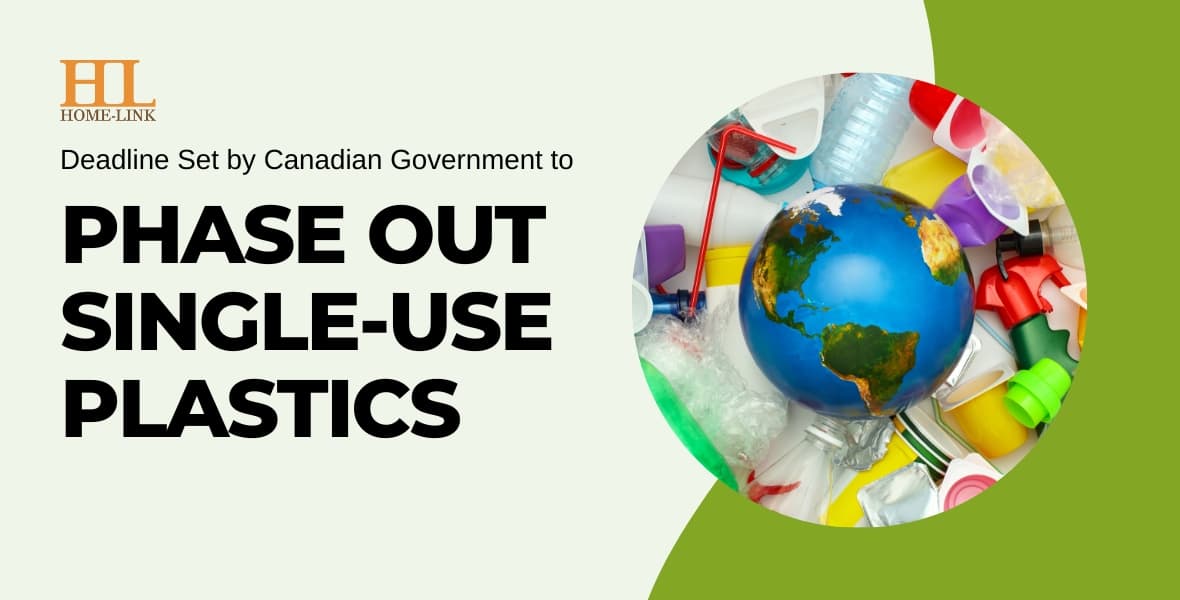By January 3rd, 2023, the Canadian government has set out a plan requiring businesses to phase out single-use plastics and eventually get rid of them. This includes banning checkout bags, cutlery, food service ware made from difficult-to-cycle plastics, ring holders, stirrers, and straws.
The Canadian government has chosen various items due to them being prevalent, damaging wildlife and their habitats, being hard to recycle, and having accessible alternatives.
On the 20th of December 2023, no sales of these items will be allowed. The production and import to sell such items were already disallowed last month.
In June 2024, selling beverage containers with accompanying ring carriers and flexible straws will be disallowed. Furthermore, the export of such items will be forbidden the following year in 2025.
Under the mandate of the Canadian Environmental Protection Act, 1999 (CEPA), the Single-use Plastics Prohibition Regulations were developed after “plastic manufactured items” were added to Schedule 1 in May 2021. This addition was based on the Science Assessment of Plastic Pollution’s discoveries.
In 2019, the Canadian Council of Ministers of the Environment issued its “Roadmap to Strengthen the Management of Single-use and Disposable Plastics” which is being used as the basis for deciding on and constructing future bans on microplastic pollution.
This roadmap has listed out thirty single-use and disposable plastics and has advised on how to choose the most important ones to address and the type of instruments that could be used to manage them.
The governments of all provinces and territories of Canada are working together to implement the Canada-wide Action Plan on Zero Plastic Waste, with the ultimate goal of achieving a future without plastic waste.
Canadian officials cite scientific data which conclusively proves plastic pollution is rampant in the environment. According to a government statement, “Macroplastic pollution is destructive to native wildlife and habitats, and much of the macroplastics on Canadian and worldwide shorelines are the result of single-use plastics, such as shopping bags and food/drink service items.”
Microplastics can be ingested or cause entanglement in organisms, leading to physical harm and death in some cases. Furthermore, plastic pollution can wreak havoc on habitats, and introduce invasive species which may spread diseases and thus diminish biodiversity.
The Canadian government is taking more steps to decrease plastic waste and contamination and to move towards a sustainable economy. These additional targets involve increasing the prevention of plastic pollution, improving the management of plastics, and transitioning to a circular economy.
The government is making efforts to reduce the amount of plastic waste by introducing regulations that require a minimum level of recycled content in certain products and introducing new labeling rules to indicate levels of recyclability and compostability. Furthermore, they are setting up a registry of plastics producers and working with the industry to establish a target for collecting plastic beverage containers for recycling.
These procedures aim to promote scientific progress and tackle the problem of plastic pollution, such as the prevention and elimination of abandoned, lost, or otherwise discarded fishing gear, commonly known as “ghost gear”.
The Canadian government has allocated CAD$19 million (US$13.9 million) to help Canadian SMEs create solutions to tackle the plastic problem. This includes the development of ecological fishing and aquaculture equipment as well as lessening the number of microplastics emitted from tire degradation.

